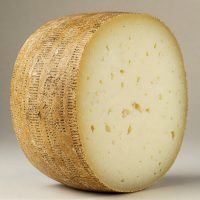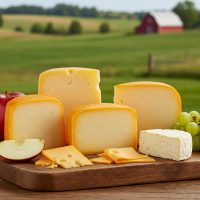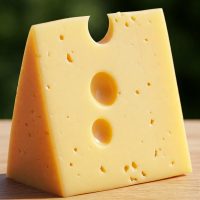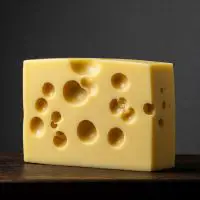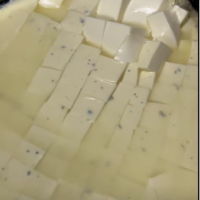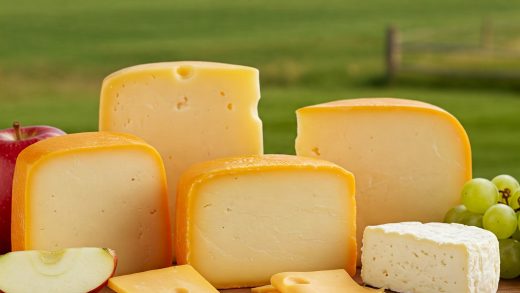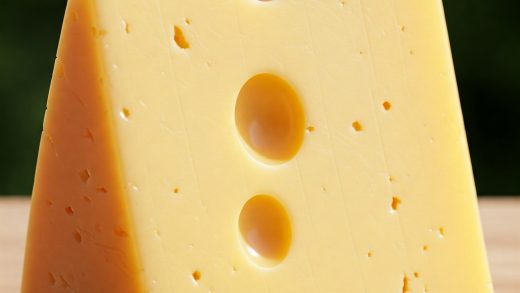You might wonder if you can eat the white fuzzy part on the outside of Brie cheese. The good news is, yes, you totally can!
That fuzzy part is called the rind, and it’s actually a good thing. It’s made by a special type of mold that grows on the cheese as it ages. This mold is safe to eat and gives the cheese a special flavor.
The rind usually tastes a little bit tangy, like a mild blue cheese. You might also notice some earthy flavors, like mushrooms or even a bit of soil.
Some people take the rind off, but many cheese lovers think it makes the Brie taste better. It adds a bit of a different texture and makes the cheese taste more interesting.
So next time you have Brie, try eating the rind. You might be surprised at how much you like it!
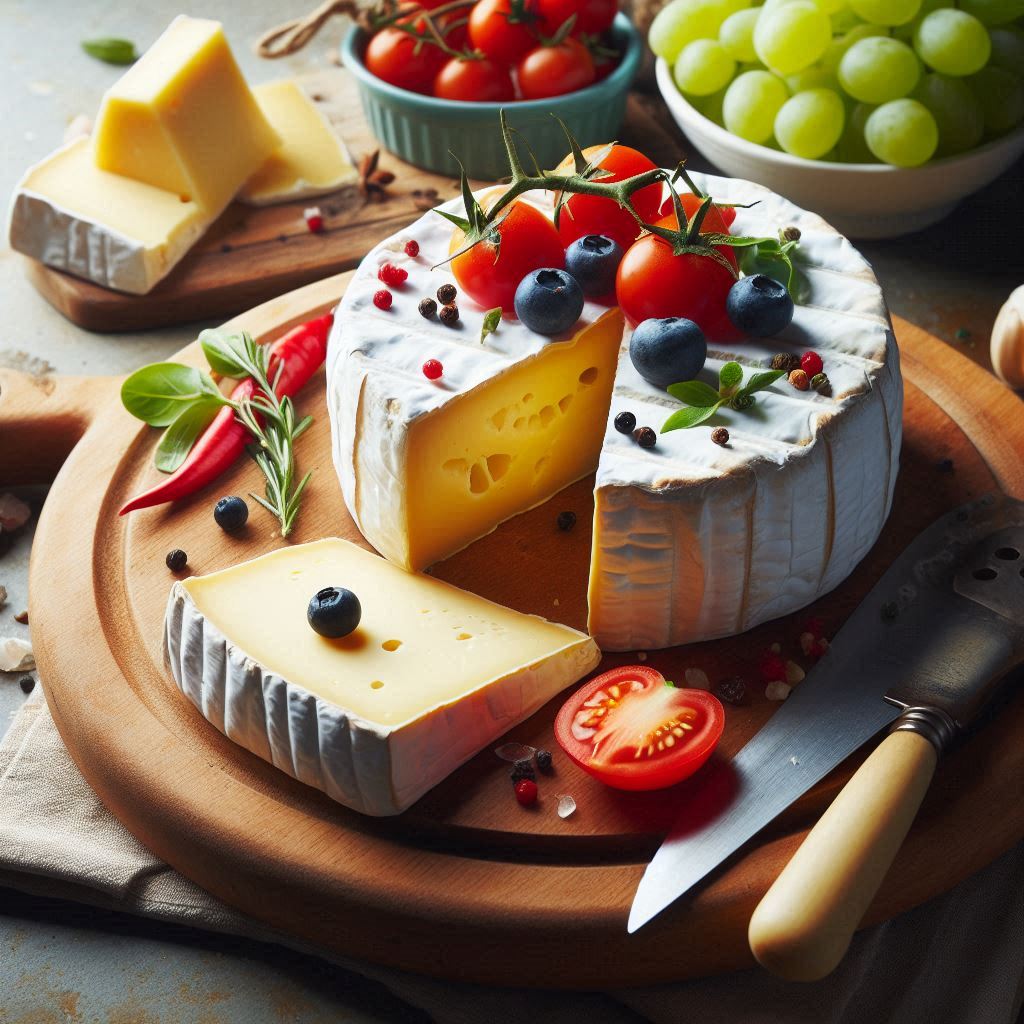
What is brie rind?
Brie rind is the edible, white, moldy outer layer of Brie cheese. It’s a natural byproduct of the cheesemaking process and is considered a delicacy by many cheese enthusiasts.
Edible Mold
The mold on Brie rind is primarily Penicillium candidum, a type of white mold that is safe to eat and adds to the cheese’s flavor and texture. This mold is different from the blue veins found in cheeses like Roquefort or Gorgonzola, which are caused by a different type of mold.
Types of Brie Rinds
Bloomy Rind: This is the most common type of Brie rind, characterized by its soft, white, velvety texture.
It’s created by inoculating the cheese with Penicillium candidum during the aging process. The mold grows on the surface, forming the edible rind.
Washed Rind: While less common for Brie, some varieties may have a washed rind. This involves regularly washing the cheese during aging with brine, wine, or other liquids.
This process encourages the growth of different bacteria and yeasts, resulting in a rind with a more complex flavor and often a slightly orange or reddish hue.
Is brie rind safe to eat?
You might be wondering: is it okay to eat that fuzzy white stuff on the outside of your brie? The answer is a resounding YES!
Not only is brie rind perfectly safe to eat, but it actually adds a delightful layer of flavor and texture to your cheese experience.
Think of the rind as the cheese’s natural armor – it protects the delicate interior while developing its own unique character. As the cheese matures, the rind becomes home to beneficial molds that contribute to the overall taste.
So, go ahead and enjoy the full experience! The rind adds a subtle earthiness and a touch of funk that complements the creamy richness of the brie. Just make sure to give it a gentle wipe with a clean cloth to remove any excess surface dust before digging in.
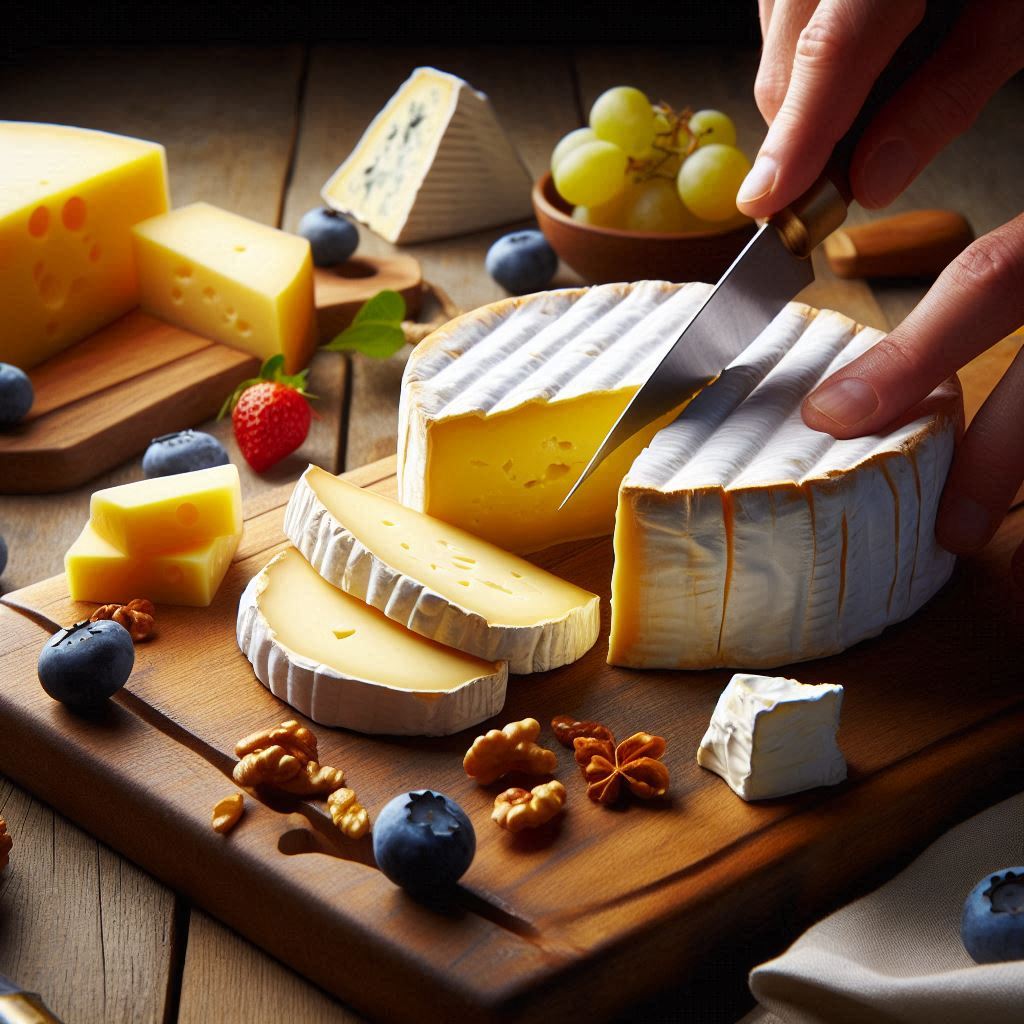
Why Eat the Brie Rind?
You know that fuzzy white coating on Brie? That’s the rind, and it’s totally edible! It actually adds a surprising amount of flavor to the cheese.
Here’s the deal:
- The rind itself has a bit of a bite to it. Think of it as a mild blue cheese – tangy and a little sharp.
- You might also pick up some earthy notes, like those you get from mushrooms or even a bit of damp soil.
- And often, there’s a distinct mushroom flavor, which adds a really savory kick.
So, how does this work with the creamy cheese inside?
- The tanginess of the rind cuts through the richness of the cheese perfectly. It keeps things from getting too overwhelming.
- The rind also has a slightly firmer texture, which adds an interesting contrast to the soft, melty center.
- And those earthy and mushroomy flavors? They add a whole new layer of complexity to the cheese. It’s like an extra dimension of flavor!
Now, some people prefer to peel off the rind, but a lot of cheese lovers think it’s a crucial part of the Brie experience. If you’re not sure, just try a tiny piece and see what you think. You might be pleasantly surprised!”
FAQs
How do you properly eat Brie cheese?
Bring Brie to room temperature. Serve with crust on or off. Enjoy with crusty bread, crackers, fruit (grapes, figs), nuts, and honey or jam. Cut into wedges or scoop out portions. Savor the creamy, rich flavor.
Is Brie cheese unhealthy?
No. Brie cheese, like most cheeses, can be part of a healthy diet in moderation.
- Pros: Good source of calcium, protein, and vitamin B12.
- Cons: High in fat and sodium.
Do you peel the outer layer of Brie?
No. You can choose to eat the outer layer of Brie.
- If you like the rind: It adds a subtle flavor and texture.
- If you prefer it without: Gently remove the rind with a knife.
Is brie better hot or cold?
No, it depends on your preference.
- Cold: Best for enjoying the delicate flavors and creamy texture.
- Warm: Melts beautifully and pairs well with warm bread or fruit.
Conclusion
So there you have it! Brie rind is not only edible but can actually enhance the flavor experience. Its tangy, earthy, and sometimes mushroomy notes add a unique dimension to the creamy cheese.
While some prefer to remove it, we encourage you to give it a try. You might be surprised at how much you enjoy that extra layer of flavor!



